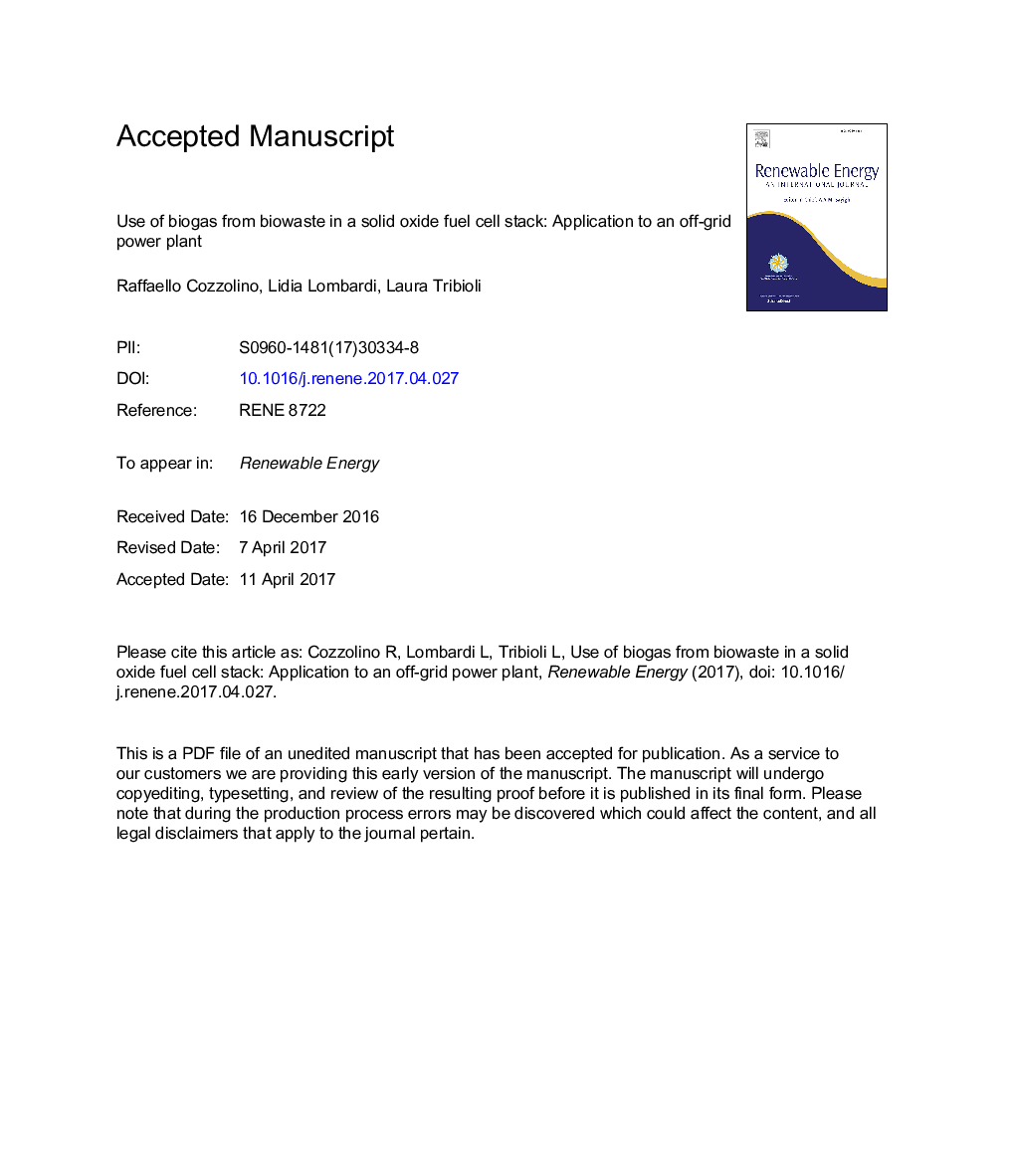| Article ID | Journal | Published Year | Pages | File Type |
|---|---|---|---|---|
| 4926353 | Renewable Energy | 2017 | 25 Pages |
Abstract
The development of fuel cells is promising to enable the distributed generation of electricity in the near future. The main candidate fuel for these devices is hydrogen, however, the infrastructure for its production and distribution is currently lacking. In a short to medium term, processing of fossil fuels will play a significant role in hydrogen generation for fuel cells and the use of renewable source - as biogas - is collecting increasing interest at international level. In this work, we consider the use of biogas to feed a solid oxide fuel cell (SOFC) studying separately in details the reforming and the power production. The biogas reforming process was investigated using a thermodynamic and chemical simulation tool. The influence of various operating parameters, such as steam to carbon ratio, carbon deposition and temperature, on the reforming performances was validated, analyzed in-depth and results are presented. Then a model able to provide the polarization curve of the SOFC was implemented and validated. The SOFC model was run using the syngas compositions obtained for three different reforming operating temperatures from 600 to 800 °C. When the temperature increased, the hydrogen molar composition in the syngas increased, whereby the results obtained by the numerical analysis showed an improvement of the SOFC performance as the reforming temperature increased. Afterwards, the reforming/SOFC model was integrated in a hybrid renewable power plant, for an off-grid application. In the proposed case study, a wind turbine and a photovoltaic panel array are used as main energy sources, while the SOFC, together with a battery and a diesel generator, is used as backup system, due to the intrinsic intermittency of main power sources. Three different scenarios, based on different amounts of biogas produced by a biowaste anaerobic digester, have been simulated and analyzed, demonstrating that the power plant is able to achieve 100% renewable operation, provided that the digester produces at least 436 m3/day on average.
Keywords
Related Topics
Physical Sciences and Engineering
Energy
Renewable Energy, Sustainability and the Environment
Authors
Raffaello Cozzolino, Lidia Lombardi, Laura Tribioli,
